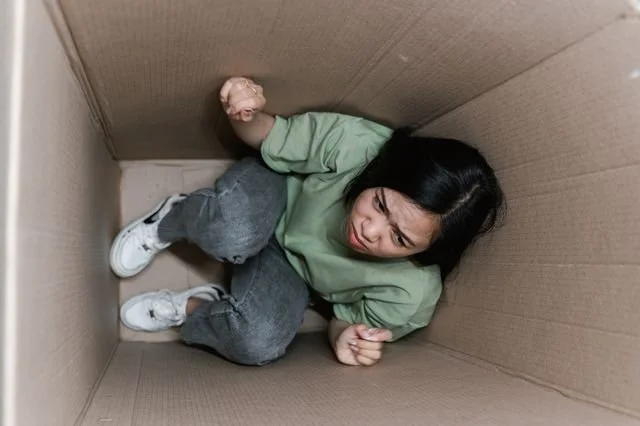A common symptom of trauma is the presence of flashbacks or other intrusive thoughts and feelings.
Flashbacks happen when personal experiences of the past show up suddenly in your awareness with any conscious effort to bring them to mind. These memories can be so powerful that it feels like you are reliving the event, along with all the thoughts and feelings that go with it. When these memories show up, it seems like your only options are to distract yourself as a way to avoid them, or just get caught up in them until they run their course.
Once you have experienced a flashback, it is not unusual to feel a lot of anxiety as you wonder when the next intrusive memory will show up. This hypervigilance can lead to irritability in your relationships; it can also lead to activities like staying at home so you avoid a situation that might trigger a flashback. After all, if these thoughts and feelings seem to come out of nowhere, you don’t have any idea when or where they will show up again.
It is easy to get caught up in this swirling maze of thoughts and feelings.
There are a variety of exercises that you can use to ground you more solidly in the present moment, instead of being controlled by memories from the past or what might happen in the future. These grounding exercises are not an attempt to avoid or control a flashback; they allow you to be more fully present even while they are happening.
In his book, The Mindfulness Toolbox, Donald Altman describes a grounding technique called BE THIS. The words form an acrostic that help you remember each part of the technique.
B-Breathe
For a minute or so, become aware of and give your attention to your breathing. You can do this in a couple of ways. Put your hand on your abdomen and feeling it rising and falling with each breath. Or feel the movement of air in and out of your nostrils with each breath.
E-Emotion
For a couple of minutes, let yourself experience your emotions and feelings. Do this with a sense of acceptance. You do not push them away, and you do not follow them and get caught up in them. You do not judge them as bad or good. Sometimes it is helpful to give a simple name to the emotion: the feeling of sadness, the feeling of anger. If you feel the emotion in your body, you can describe that as well: knot in the stomach, tightness in the shoulders. As you do this, notice if anything happens to these emotions.
T-Touch
For the next minute or so, experience touch. This could be as simple as pressing your feet firmly into the ground. You could bring your palms together in front of you and feel them touching each other. Or you can touch any object close to you: a table, a glass.
H-Hear
For the next minute or so, become aware of the sounds around you. It could be a noise in the environment around you, or the sound of your own breathing. Just let the sounds come to you without naming or labeling them. For example, instead saying “the blowing of the wind” or “a car driving by,” just listen to the sounds that are there.
I-Intentional Stretching
For the next minute, pick one simple stretching action, and do it slowly with intent. It might be raising your arms above your head and then lowering them. Or it could be rolling your head in a circular motion. As you do this action, be aware of what it feels like in that part of your body.
S-Sight/Smell
For this last minute, simply look around and notice the different objects around you. Instead, of naming them, just notice their shapes, colors, movements. If you are aware of any smells, again experience them without giving them a name.
As you can see from the instructions, this is a practice you can do in 7-10 minutes. You don’t want to rush through it, but you can move through it easily in a short amount of time. It is a practice that you can use when you are experiencing flashbacks or intrusive thoughts and feelings, but it is also helpful to do it proactively, as a way to stay grounded in the present, instead of caught up in your thoughts. It also helps if you are struggling with anxiety and depression as well.
This is one of many practices I teach in my work with those who have experienced trauma. If you would like to learn more, visit my trauma treatment page.



